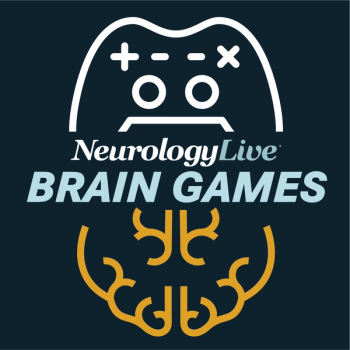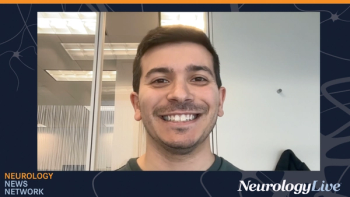
Factors to Consider When Choosing the Right Disease-Modifying Therapy for Newly Diagnosed MS
Gabrielle Macaron, MD, assistant professor of neuroscience at Université de Montréal, discussed the nuanced clinical decision-making involved in initiating a DMT for patients newly diagnosed with MS.
Deciding which disease-modifying therapy (DMT) to recommend for patients newly diagnosed with multiple sclerosis (MS) may be often complex, given the increasing number of available treatment options and the wide range of outcomes they could impact. Although patients with MS have an interest in taking an active role in the treatment decision process, the current therapeutic landscape calls for improved strategies to support shared decision-making between both patients and their providers.
Expert
In the conversation, Macaron talked about the importance of age, disease duration, and burden when tailoring treatment strategies for those newly diagnosed with the autoimmune disease. She also covered considerations for clinicians on special patent populations as well as the need to balance efficacy with safety through risk mitigation. Toward the end of the discussion, Macaron touched upon the value of incorporating patient preferences and lifestyle into the decision-making process to ensure adherence and long-term treatment success.
NeurologyLive: What clinical factors most influence clinicians’ choice of initial DMT for a patient newly diagnosed with MS?
Gabrielle Macaron, MD: There are several factors that we need to take into account in a newly diagnosed patient with MS from the get-go before picking a specific DMT. One of the most important is age and disease duration. We know that our younger patients who have shorter disease duration typically have highly active disease or more active disease. Here, we want to make sure that we are treating them early and effectively from the start.
We also sometimes have patients who have back-to-back relapses or several gadolinium-enhancing MRI lesions at diagnosis, and we want to make sure that we're using medications with a fast onset of action, such as natalizumab (Tysabri; Biogen) or antiCD20 therapies. Young age and short disease duration are both considered to be positive treatment effect modifiers, in the sense that they are associated with better treatment response, specifically for higher-efficacy medications. This is definitely something to consider when picking a DMT.
But on the other side, a lot of our patients are 50 years or older and need to be treated as well. We know that with age, the efficacy of medication probably decreases, and the risks probably increase. Unfortunately, as we age, we face processes such as immunosenescence, higher risk of infections, and higher risk of cancers. In general, all of this increases. So, we do have to be careful in picking a DMT, taking into account comorbidities and the general context in patients who are 50 years or older, and optimize risk mitigation strategies in this population.
Another important factor is differentiating late-onset MS from long-standing MS. These 2 things are different, but both relate to age. I think long-standing MS is not a treatment initiation concern, so we don’t really have to think about long-standing MS in a newly diagnosed patient—it doesn’t typically fit. However, in late-onset MS—patients with active disease after a certain age, when we wouldn’t expect them to be active—treatment initiation is a consideration. I think induction therapies such as cladribine (Mavenclad; EMD Serono) offer what we call soft-landing or exit strategies that can offer long-term protection and short-term immunosuppression in this population, and I think these are gaining more interest.
Another important factor, other than age and disease duration, is disease burden. Of course, our patients who have a high disease burden, specifically in the spinal cord or the infratentorial regions, typically have a poor prognosis, and we want to treat them with our best medications as early as possible. But on the other hand, even patients who have a low or moderate disease burden—especially if they’re young and it’s the beginning of their disease—we want to make sure that we’re optimizing our treatment strategy in the earliest phase, when inflammation is at its peak and our medications work best.
Family planning is an important one. We need to discuss family planning very early on in the diagnosis, because this will definitely impact the choice of medication we’re using. I think pregnancy plans should not delay using a treatment—specifically in somebody who has active relapsing MS. Fortunately, we do have many medications that are easy to use around pregnancy planning, and most women find a way to find the right medication for them without significantly altering their conception plans.
Adherence is an important factor as well. There are factors associated with poor adherence, for instance, age (specifically adolescents and kids), cognitive impairment, lower socioeconomic status, depression, and poor social support. All of these are linked to poor adherence, and those need to be considered when choosing a medication. For example, oral medications might not be the appropriate choice for people with poor adherence factors.
And access—access to DMTs—is an important one. Not all medications are available across countries, and not all are covered as first-line. So, we have to take this into account. It depends on the country what we can or cannot start with.
How do you weigh safety and efficacy when discussing treatment options with patients?
There’s the risk of MS itself and the risk of treatments, and there's always a balance between both. That balance really depends on all the factors we discussed earlier. We have to discuss the risk of MS itself in all newly diagnosed patients, because the most important justification for early and effective treatment is the reversible pathology of the disease.
Patients need to understand that MS is unpredictable. It's hard to know from the beginning who is going to do well or not on a specific treatment, or even without treatment. But based on natural history cohorts, we know that only a very small minority of people will do fine after many years in the very long term. On the other hand, we also know that most patients will do well on high-efficacy therapies, at least in the medium to long term. So, these are things that need to be highlighted.
This discussion should be emphasized even more in patients who are young and have highly active disease. Also, knowing that the benign MS phenotype is a retrospective diagnosis—we can’t really know at diagnosis who is going to have benign MS. We’ll have to wait a long time and then look back and say, “Oh yeah, finally, you had benign MS”—but it's not something we can predict.
The other aspect of this risk-benefit balance is the mitigation strategies we need to implement to minimize the risks of DMTs themselves. This includes screening for related infections, including JCV serology when using natalizumab, making sure patients are up to date with vaccinations, putting in place strong monitoring strategies, and educating patients about potential adverse effects and when they need to alert us. Here, I think patient support programs from pharmaceutical companies can be helpful in making sure that at least the pretreatment workup and ongoing monitoring are going as expected, and that nothing falls through the cracks.
Can you walk me through how a patient's lifestyle or preferences may shape treatment recommendations?
In this new, very exciting era for MS, we have a lot of DMTs, so we do have the luxury to adapt our treatment choices to patient preference and lifestyle. I think most patients will know what suits them best once we explain all the possibilities.
Some patients will definitely find it easier to take a minute every month to inject themselves at home without going anywhere. Other people will find it much better to not think about having a treatment for several months and instead go to an infusion center for half a day every 6 months. Other patients who are already taking a daily oral medication for another reason won’t find it bothersome to add another pill to what they’re already doing. So, it really depends on the specific patient—you can't know beforehand without discussing it with them.
Travel can be a problem for some people who travel a lot for their jobs. This might affect being on time with the schedule for IV monoclonal antibodies. But fortunately, based on extended interval dosing studies, we know that we can push infusions a little bit forward or backward, so it’s rarely a significant problem. Ofatumumab (Kesimpta; Novartis) has the advantage that you can travel with it because it can stay out of the fridge for 7 days, so this might be perceived as an advantage. And of course, pills are very easy to travel with.
Sometimes, patients will have a specific perception of risk based on a certain belief that may not reflect the full picture. So, our job is really to make sure that they have all the information and understand everything about the medication before making a choice.
Transcript edited for clarity.
REFERENCES
1. Macaron G. Decision Making Process Around What DMT to Start. Presented at: 2025 CMSC Annual Meeting; May 28-31; Phoenix, AZ. Era of Too Many Choices: Starting and Switching.
Newsletter
Keep your finger on the pulse of neurology—subscribe to NeurologyLive for expert interviews, new data, and breakthrough treatment updates.




